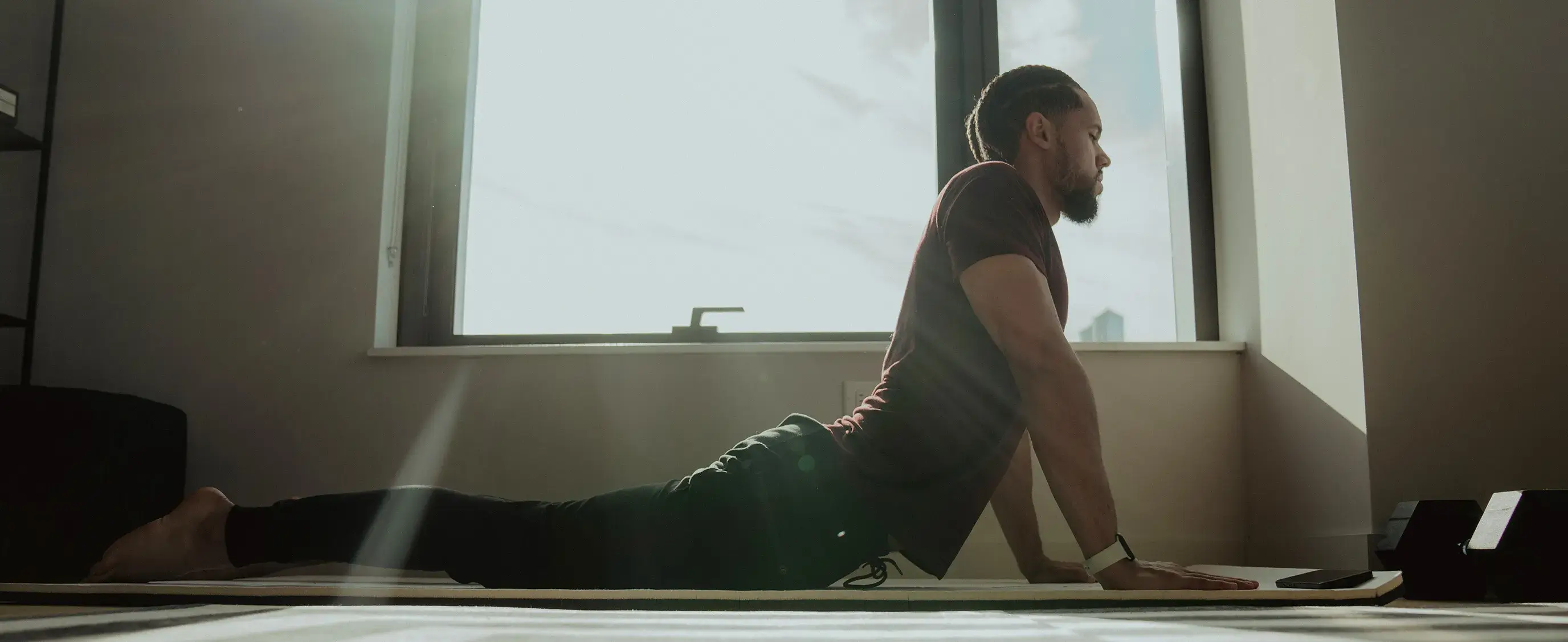Have you ever tried to perform a movement only to be met with a painful stiffness or a tightness that threw you off balance? You may have had to modify your original plan and go about your day, sighing in frustration. Many people experience a lack of mobility and flexibility as they age or after taking time off from training. You can improve your mobility and flexibility and eliminate that annoying stiffness by incorporating mobility exercises into your daily routine. This article will help you achieve improved mobility, enhanced flexibility, and pain-free movement, allowing you to easily perform daily activities and workouts while reducing the risk of injury and maximizing your physical potential.
One resource to help you achieve your mobility goals is Pliability's mobility app. It offers an organized approach to perform mobility exercises that target your specific needs, so you can get back to the activities you love.
What Is Mobility and Why Is It Important?
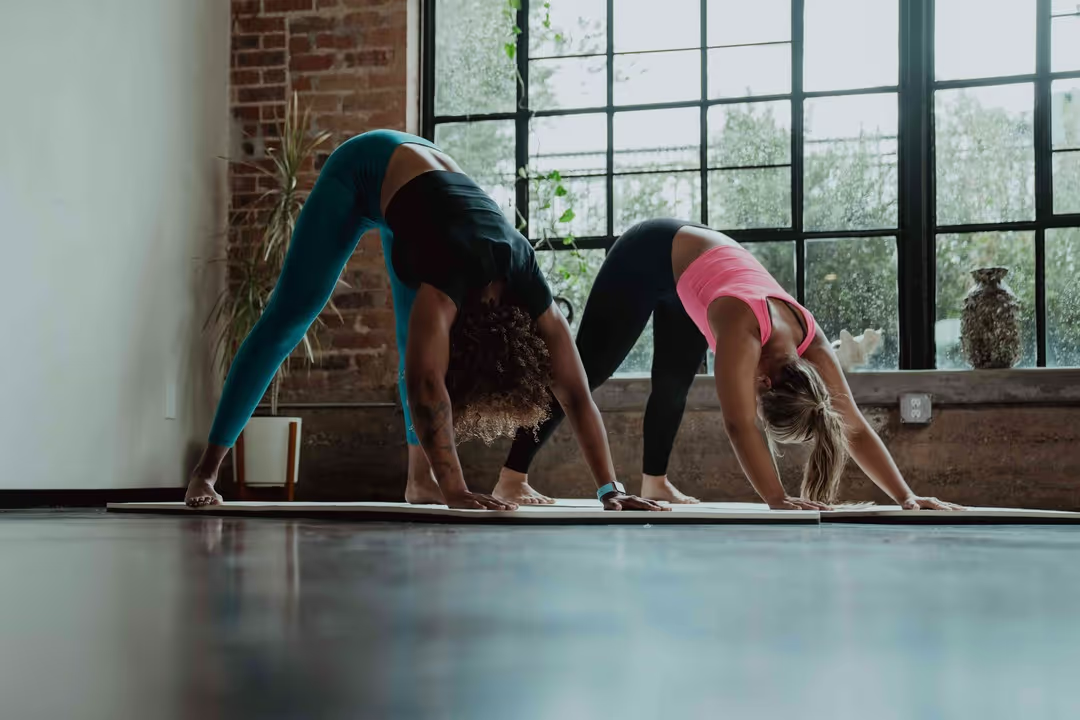
Mobility is the ability of a joint to move through its full range of motion with control and stability. It’s crucial for functional movements in daily life and athletic performance. Proper mobility reduces:
- Risk of injury
- Enhances movement efficiency
- Supports overall physical health
Enhanced Mobility
Do you ever feel stiff or creaky? After sitting for long periods, you notice it takes a little warm-up time before you can move freely again without all the snap, crackle, and pop. Well, imagine moving through your day, fully present in every inch of your body, from the top of your head to each toe as you easily carry out unrestricted movements, such as:
- Stretch
- Twist
- Bend without any pain or stiffness
- Take long walks
- Stand for extended periods
- Go about your daily life without feeling the need to sit down and rest.
Mobility and Its Role in Daily Life
Mobility means being able to move naturally, with control but without noticeable effort, as your body seamlessly responds in time to your intentions. When you have good mobility, you should experience no strain or pain as you move through your day, such as during these common daily actions:
- Bending to tie your shoes, which activates the hips and knees
- Reaching for a glass on the highest shelf, which utilizes the shoulder joint and muscles
- Walking up or down stairs, requires healthy leg muscles and a full range of motion in the ankles
Good mobility involves many components, including:
- Muscle strength
- Flexibility
- Joint health
- Motor control
- Body awareness (a type of sensation called proprioception)
- Agility and more.
“Having good mobility allows you to perform the movements and exercises that are a part of your daily life—and it can make you less likely to suffer certain injuries,” Peloton instructor Andy Speer says. “Mobility basically gives your body room to move.”
The good news is that mobility is primarily a lifestyle choice. The key to increasing and maintaining good mobility is regular physical activity. That’s why children tend to have excellent mobility. You don’t have to do cartwheels to boost yours, though. Try mobility training instead.
Mobility and Aging: Is There a Link?
While the adage, “if you don’t use it, you lose it,” most certainly applies to mobility, it’s not just sitting still for too long or skipping a workout or three that makes you less agile and accessible.
Natural, age-related changes that occur in the body and can affect how easily you move, such as:
- Muscle mass decline
- Reduced bone density
- Slower nervous system responses
On top of that, your mobility can be compromised by any of the oh-so-common chronic health conditions among Americans, such as:
- Arthritis
- Diabetes
- High blood pressure
- Cardiovascular disease
Your chances of being diagnosed with any of these increase as you age. No wonder pain, stiffness, and reduced range of motion occur more frequently with age. But you don’t have to succumb to these difficulties. You can lessen their impact with mobility training. You may even find that an activity like cold pluging can help to reduce pain, and stiffness. Some people even DIY cold plunge systems so that they can practice cold plunging on a daily basis, cost effectively.
Related Reading
- Ankle Mobility Exercises
- Knee Mobility Exercises
- Shoulder Mobility Exercises
- Hip Mobility Exercises
- Thoracic Mobility Exercises
- How To Improve Flexibility
- Wrist Mobility Exercises
- Stretch Before Or After Workout
- Leg Mobility Exercises
- Best Stretching Routine
- Mobility Exercises For Beginners
- Mobility Exercises For Athlete
- Lower Body Mobility Exercises
- Back Mobility Exercises
Mobility Training: A Specialized Approach for Joint Health

Mobility training focuses on improving joint movement through targeted exercises. The goal is to maintain and improve joint health. Enhanced mobility helps you move better and perform everyday activities more efficiently. This type of training is different from flexibility, which concentrates on muscles and soft tissues. Also, it’s not the same as foam rolling, which relieves muscle tension. Mobility training targets the:
- Whole joint
- Muscles
- Tendons
- Ligaments
- Affected soft tissues
What to Expect from Mobility Training
Mobility training involves exercises and movements that strengthen and lengthen your body, allowing you to move freely and efficiently. A mobility training class may include elements of various fitness routines you may or may not already be familiar with, such as dynamic stretches, foam rolling, bodyweight exercises, yoga, and Pilates.
Benefits of Mobility Training
Mobility training exercises are about much more than just being flexible. If done right and regularly, mobility training can:
- Increase your range of motion
- Relieve tight muscles
- Ensure good posture and proper athletic form
- Prevent injury.
“Mobility classes are versatile and effective,” Andy says. “You can use them to start your day, end your day, as an active recovery on non training days, or as a low-intensity exercise when you want to move a little but not engage in a full workout. It’s a fun way to explore how well your body’s moving.”
Mobility training is ideal for men and women of all ages and fitness levels. It’s especially perfect for workout newbies or those who’ve tried but have been unsuccessful at sticking to a regular exercise plan. Once mobility improves, energy, drive, and ability to work out harder in other areas increase. Mobility training can:
- Improve athletic performance for athletes and regularly active adults
- Help ward off the dreaded but widespread overuse injuries.
Mobility Training vs. Stretching vs. Foam Rolling
Although mobility training might sound a lot like stretching or foam rolling, the focus and goal of each activity differ significantly.
Stretching
Stretching mostly focuses on lengthening muscle and other soft tissue to increase flexibility, typically in a few common problem areas of the body:
- Calves
- Thighs
- Low back
- Hips
- Neck
- Shoulders
Static vs. Dynamic Stretching
- Static stretching: Extending a muscle and holding it there for about 10-30 seconds, like a toe touch, can help you recover after a workout or injury.
- Dynamic stretching or controlled movements: Mimic your activity or sport, such as lunges or arm circles, is best done as a warm-up prior to a workout or intense activity.
Foam Rolling
Foam rolling is used to relieve muscle tension. Using a hard foam cylinder, you use your body weight to press on specific points in your body, by rolling the area back and forth over the cylinder.
Mobility Training
Mobility training utilizes techniques that address:
- Muscles
- Tendons
- Ligaments
- Joints
- Range of motion
It also involves:
- High degree of control
- Coordination
- Awareness
It effectively loops in your nervous system, which is the main line of communication between your body and brain. With mobility training, the focus is on how you function and move as an entire body rather than individual muscle groups. It also targets movement patterns that are fundamental to daily life and specific types of athletic performance.
You might consider mobility training the best of all possible worlds: It takes a more comprehensive and holistic approach than simply stretching or foam rolling.
Equipment for Mobility Training
Mobility training usually requires little, if any, equipment.
- Mat: Provides a comfortable surface for exercises performed while sitting or lying down.
- Yoga Blocks: Used to support your body in various poses.
- Foam Rollers: Used to help relax and stretch muscles.
- Resistance Bands: To assist with reaching parts of the body that may be difficult to reach without assistance.
- Massage Ball: Used to target and relieve strain in hard-to-get-to muscle groups.
Even if mobility is a new term to you, it’s something sports medicine doctors, physical therapists, and any providers focusing on movement have long emphasized as necessary. And it’s not just for runners, but all athletes or anyone who moves their body and hopes to stay strong and injury-free.
Enhancing Joint Range of Motion
“Mobility exercises (sometimes called mobility work) are designed to increase the range of motion of a joint,” says Samantha Smith, MD, a Yale Medicine primary care sports medicine specialist.
“The joints are the points of motion in our body. So, any time we move, we don’t want a limitation because of a stiff joint. This can happen for many reasons, including joint inflammation or just because we haven’t been using it, which could cause the soft tissues around it to tighten,” Dr. Smith explains. “A muscle injury or tightness can also affect the joints. Likewise, if the ligaments aren’t being used, they can become less pliable.”
Mobility for Daily Comfort and Well-being
Dr. Smith adds that everyone can relate to waking up in the morning and feeling stiff or tight. “And you can feel the difference between that and how you feel after your body is warmed up from exercise, where you have more freedom of movement,” she says. “That is the goal of mobility work: to give your joints that freedom instead of having them be a source of restriction and to potentially prevent muscle strains and joint soreness.”
Why Mobility Train?
It's easy to practice. Maintaining mobility is so simple. Think of mobility as little movements that can be incorporated into your daily routine. “It’s like a movement snack,” says McPeak. Incorporate a few moves to keep your body strong, healthy, and pain-free:
- When you wake up
- During your lunch break
- Before bed
It Helps Minimize Your Risk of Injury
Investing in mobility will reduce your risk of injury, improve joint health, reduce muscle soreness, and speed up recovery. “Without mobility, our bodies may not move optimally and can then put us at higher risk of injury,” says Hutson. “Breakdown (aka injury) typically occurs at areas above and below a region with limited mobility,” explains Hutson. “When you lack mobility in one area of your body, other muscles work overtime.”
It Can Help Improve Strength
“Mobility significantly helps improve overall strength,” says McPeak. Your body’s freedom to move with maximum range of motion will increase the quality of your training. For example, by improving hip mobility you can achieve a deeper squat with proper form, which ultimately results in building muscle (it’s a win-win situation).
5 Benefits of Doing Mobility Exercises
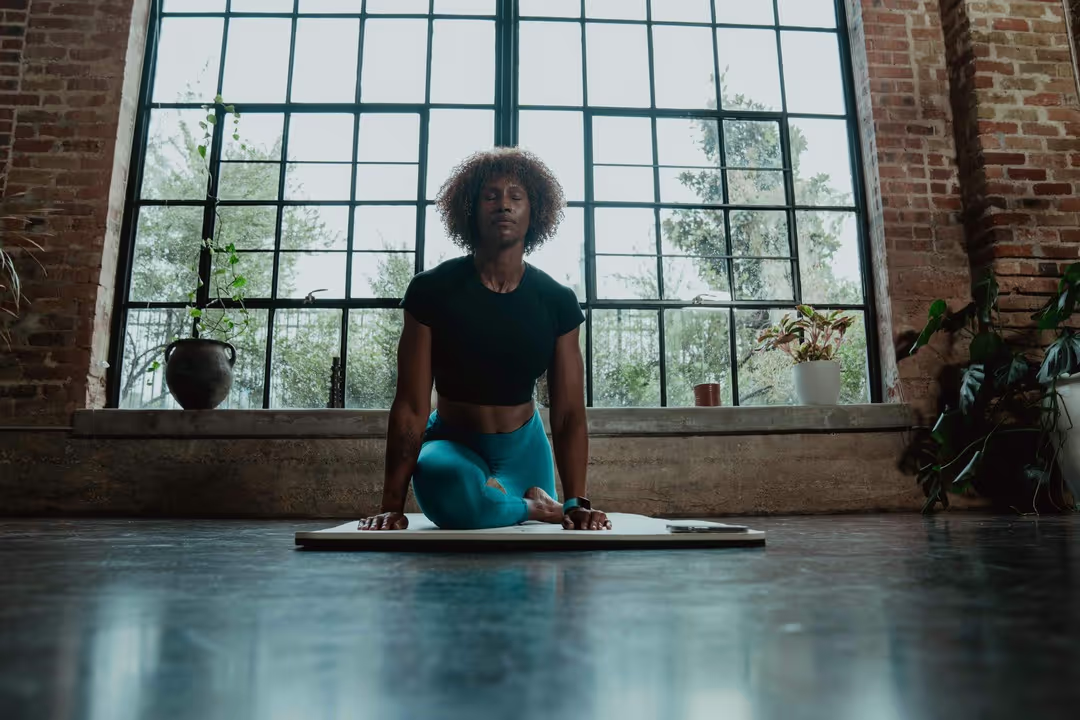
1. You Reduce Injury Risk
Limited range of motion often leads to compensatory patterns that can cause injury. For example, poor ankle mobility can restrict how deeply you can squat. This may lead to forcing the movement and placing undue strain on the low back. Mobility training helps to improve your ankle mobility, so you can squat more naturally and avoid the injury risk associated with poor range of motion.
2. You Enhance Movement
Sanchez says mobility training improves overall movement performance, meaning you can:
- Move more efficiently
- Enhance athletic skills such as agility, balance, and speed
- Recruit more muscle fibers
3. You Maintain Joint Health
Joints with a limited range of motion can become stiff. Mobility training keeps them lubricated and moving freely. Strengthening the muscles around the joints also helps keep them healthy.
4. You Gain Greater Proprioception
Proprioception is awareness of your body in space. Honing your senses in this way can improve your form and technique and therefore potentially increase your results.
5. You Improve Balance and Stability
Both balance and stability help you perform complex movements, single-leg exercises, or plyometrics, but maintaining these skills helps prevent falls and other injuries in everyday life.
A Performance-Focused Yoga App for Enhanced Mobility and Recovery
Pliability offers a fresh take on yoga, tailored for performance-oriented individuals and athletes. Our app features a vast library of high-quality videos designed to:
- Improve flexibility
- Aid recovery
- Reduce pain
- Enhance range of motion
Pliability provides daily-updated custom mobility programs for those interested in optimizing their health and fitness. It also includes a unique body-scanning feature to pinpoint mobility issues. If you're feeling limited by pain or ability to move, Pliability aims to complement your existing fitness routine and help you move better.
Sign up today to get 7 days absolutely for free on iPhone, iPad, Android, or our website to improve flexibility, aid recovery, reduce pain, and enhance range of motion with our mobility app.
What’s the Difference between Flexibility and Mobility?
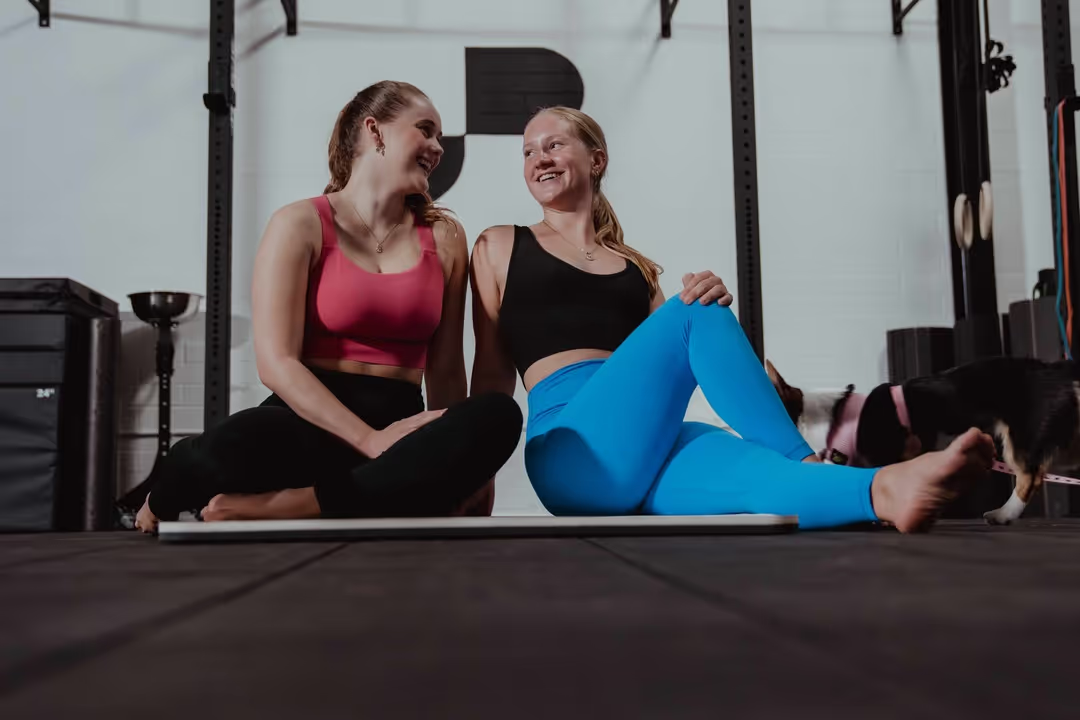
Flexibility and mobility are not the same. Flexibility refers to the ability of soft tissues, like muscles and tendons, to stretch passively, while mobility refers to a joint’s active range of motion. Good flexibility aids mobility, but they aren't interchangeable.
A person can be flexible but lack mobility. For example, someone may be able to passively reach and touch their toes. This demonstrates good flexibility of the hamstrings and hip muscles. However, if this same person cannot actively control the movement and touch their toes without losing stability and strength, they lack the mobility necessary for healthy movement. Improving mobility requires enhancing flexibility and strength to stabilize the joints throughout the movement.
Why Do Flexibility and Mobility Matter?
Mobility and flexibility are important for all forms of movement, from exercising to daily activities. Flexible muscles and joints allow the joints to move through the proper range of motion. So, an individual’s mobility is also impacted if a muscle lacks flexibility. This, in turn, can:
- Alter movement and posture
- Impact performance
- Increase the risk of injury
Keep in mind we aren’t just talking about athletes. Everyday movements like sitting, walking, and reaching all require flexibility and mobility. So, both flexibility and mobility play a key role in the quality of life. Healthy movement includes:
- A combination of joints that aren’t supposed to move (immoveable)
- Joints that have limited movement
- Other joints that allow for a much broader range of motion
Functional movements typically require a blend of different joints to stabilize, support, and move the body. So, it is important to have the strength and stabilization to support the appropriate joints while another joint is moving and keep those joints in a safe and optimal position.
What Factors Affect Flexibility?
Numerous factors can influence an individual’s flexibility, including:
- Genetics: Genes play a large role in an individual’s natural flexibility.
- Age: Flexibility typically declines with age.
- Injury: Pain, scar tissue, etc., can limit the range of motion.
- Hormones: Pregnancy hormones can increase the elasticity of the connective tissue in the body.
- Gender: Females tend to be more flexible than males.
What Factors Affect Mobility?
Several factors can impact a person’s mobility. These include:
- Joint structure: Different types of joints allow for different movements.
- Age: Joint mobility typically declines with age.
- Soft tissue flexibility: Proper muscle elasticity, tendon, and ligament are essential for a full range of motion.
- Overall health: Certain health conditions can impact an individual’s mobility.
- Fat/muscle mass: Excess fat or excess muscle can impact movement.
Related Reading
- Golf Mobility Exercises
- Upper Body Mobility Exercises
- Mobility Exercises For Runners
- Can You Over Stretch
- Squat Mobility Exercises
- Functional Mobility Exercises
- Why Stretching Is Important
- Foot Mobility Exercises
- Arm Mobility Exercises
- Hamstring Mobility Exercises
- Elbow Mobility Exercises
- Rotator Cuff Mobility Exercises
- Bed Mobility Exercises
- What Are Mobility Exercises
- Full Body Mobility Exercises
26 Mobility Exercises for Improved Strength and Movement
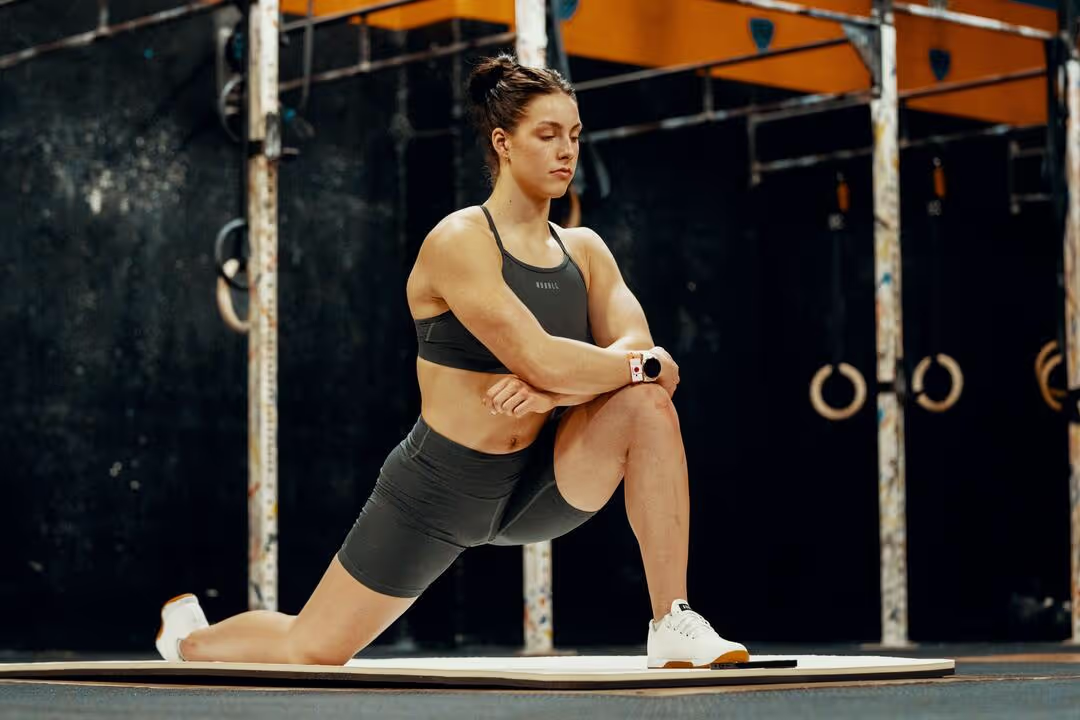
Mobility movements can:
- Help you move better, improve performance, and reduce injury risk.
- Increases the range of motion in your joints and lessen stiffness, making it easier to perform everyday activities.
- Reducing joint stiffness and improving mobility can enhance athletic performance, as better joint function means the body can move more efficiently during physical activity.
- This can help you run faster, jump higher, and change direction with ease.
- Better joint mobility can help prevent injuries.
For example, improved ankle mobility can help you avoid spraining your ankle when landing from a jump. Regularly performing mobility exercises can also help alleviate joint pain, particularly for those with arthritis. As you improve the range of motion in your joints, you can reduce your reliance on medication and move with less discomfort. These are some of the best mobility movements you can do practically anywhere, shared by Renato Sanchez, PT, DPT, C.S.C.S., a physical therapist at Bespoke Physical Therapy in San Diego, CA.
Hip Mobility Moves
Sanchez also shared some of his favorite mobility exercises that emphasize hip mobility. Improving this will benefit everyone, no matter your preferred workout method. Try these movements as a warm-up routine, running through each for one round of six to 12 reps each.
1. Spider Lunge
- Starting in the plank position, bring your right foot outside your right hand.
- Push your hips forward and squeeze the glute of the left leg.
- Return the front foot to the starting position, and repeat on the opposite side.
2. Crescent Lunge
- Place one knee on the ground and the other foot in front of you in a lunge.
- Push your hips forward and squeeze the glute of the back leg.
- For an extra stretch, raise the arm on the same side of the back leg and lean slightly inward to open the hip even more.
- Pause for a few seconds, and repeat on the other side.
3. World’s Greatest Stretch
- Bring your right foot up from the plank position to place it outside your hand.
- Squeeze your left glute and then drop your right elbow toward the ground, feeling the stretch on the back of the thigh.
- Twist back through the center and rotate your torso to bring your right arm straight up to the ceiling, following your hand with your eyes.
- Return the palm to the plank position and repeat on the opposite side.
4. Posterior Capsule Stretch
- Begin on your hands and knees with knees under hips and palms under shoulders.
- Cross one foot over the other and lean to the side so you feel the stretch on the outside of your hip.
- Return to the starting position and repeat on the opposite side.
5. Adductor Rocks/Inner Thigh Groin Stretch
- Start on all fours, knees in line with hips, and palms in line with shoulders.
- Extend one leg to the side with your foot flat on the ground and rock your hips backward so you feel the stretch on the inside of your thigh and inner groin.
- Return the knee to the starting position, then repeat on the opposite side.
6. Cossack Squat
- Stand with feet wider than shoulder-width apart, toes turned slightly out, and arms straight out in front of your chest.
- Shift weight onto your right side as you sit back into hips and bend your right knee to lower into a squat until your right thigh is parallel with the floor or deeper.
- Keep the left leg fully extended to the side, with the heel planted.
- The toes will pivot to point up.
- Keep your chest lifted and your right heel flat on the floor.
- Press through your right foot to return to standing, and repeat on the opposite side.
7. 90-90 Stretch
- Begin sitting with one leg bent in front of your body at a 90-degree angle with your shin parallel front.
- Bend your back leg into the same 90-degree angle behind so your knee aligns with your hip.
- Pivot so reverse the shape, lifting knees, and dropping them to the other side.
- Brace your core and push through the floor to lift your hips, squeezing your glutes at the top.
- Slowly sit back down, maintain 90-90 shape with both legs, and pivot to repeat on the opposite side, lifting hips at the end.
Lower Back Mobility
You’ve probably dealt with lower back pain at some point in your life. It’s a nagging annoyance that can affect many of your daily movements. Keeping your lower back mobile and strong can help you move better and longer.
8. Lumbar Rotation/Lumbar Windshield
- Begin lying on your back with knees bent together and your feet flat on the floor.
- Slowly twist the lower spine so knees drop to one side.
- Stop when shoulders begin to lift from the ground.
- Pause, then come back together center and repeat on the opposite side.
- Continue switching sides.
9. Prone Lumbar Twist/Scorpion
- Begin lying on the ground face down with your forehand resting on the back of your hands for support.
- Keeping your torso connected to the floor, lift your right leg, crossing it over the left until your right foot taps the ground.
- Pause.
- Come back to the starting position, repeating on the opposite side. Continue switching sides.
10. Squat with Thoracic Twist
- Begin standing with feet at hips-width.
- Bend knees to lower down into a squat.
- At the bottom of the movement, open your arms out wide, twisting your torso to the right as you lift your right arm straight up, following your hand with your eyes.
- Come back through the center to twist to the left side, raising your left hand up toward the ceiling.
- Repeat, switching sides.
Shoulder Mobility
Your shoulder joint is key to healthy movement. So many actions in daily life depend on healthy shoulder function, from lifting something off a high shelf to putting on a shirt. That’s why it’s crucial to safeguard the key joint by training its mobility.
11. Shoulder CARs
- Stand up tall in a balanced stance.
- Raise one arm straight up with your palm facing in.
- As you reach the top point (with your arm extended straight up), turn your palm away from yourself as much as mobility allows.
- Keep moving your arm through the range of motion until you reach the starting point.
- Continue for 10 controlled reps, then switch arms.
12. Thoracic Extension on Foam Roller
- Put the foam roller on the floor, then get down on the ground and press your midback into the tool so it's perpendicular to your body.
- Raise your arms and join your hands behind your head.
- Tuck in your elbows.
- Using the foam roller as a hinge, extend your back through the limits of your mobility.
- Hold for 3 seconds, then return to the start.
- Repeat for 10 total reps.
13. End Range Lift-Offs
- Lie down on the floor with your chest on the ground and your neck in a neutral position (not looking up).
- Your arms should be extended above your head in the 'Y' position, with your hands resting on the floor.
- Raise your arms straight up off the floor, keeping them straight.
- Hold for three seconds, then slowly lower down.
- Repeat for 10 times.
14. Horizontal Ts
- Get on the floor on your stomach, with your hands out to the sides, like a T.
- Keep your hands in a 'thumbs up' position.
- Squeeze your shoulder blades, lifting your hands off the floor.
- Hold for 3 seconds, then lower down to the start.
- Repeat for 10 reps.
15. ER (External Rotation) Lift-Offs
- Get face down on the floor, bringing your arms into a goal-post position to your sides.
- Place a yoga block underneath one elbow.
- Rotate that arm up to raise it off the block.
- Hold for 3 seconds.
- Repeat for 10 reps, then switch the block to the other arm for 10 reps.
16. 90/90 Hip Switch
- Sit up straight with your legs slightly wider than hip-width apart and both knees bent at 90 degrees.
- Keep your heels on the floor (in the same position) and rotate your knees from side to side. (For an added challenge, hold your arms straight before you.)
- Maintain an upright posture as you move your knees and focus on movement from the hips.
- Complete six reps on each side.
17. Cat Cows
- Start on your hands and knees with hands shoulder-width apart and knees directly below hips.
- Inhale as I pull your belly button to your spine and curve your lower back.
- Hold this “cow” position for 2-3 seconds.
- Slowly transition to the “cat” position by arching your back and looking up to the sky.
- Hold the “cat” position for 2-3 seconds.
- Complete 8 reps in each position.
18. Downward Dog Hip Opener
- Come into a plank position to start with your shoulders stacked over your wrists and hands.
- Push back from your hands and hike your hips to bring yourself into a downward dog position.
- Bend your left knee towards your chest, then lift your left leg up and back behind me.
- Open up from your hip, letting your left foot fall towards your right glute.
- Reverse the movement to return to start.
- Repeat on the other side. That’s one rep.
- Compete eight reps.
19. Half Kneeling Adductor Rock
- Start in a half kneeling position, left leg in front of you with the knee bent and left foot planted on ground, right knee resting on the ground either directly beneath your torso or slightly behind you, with an approximately 90-degree bend.
- Step left foot out to the left and place hands on hips.
- Shift your hips toward the left and weight onto your left foot.
- Hold this position for 1-2 seconds before returning to center.
- Repeat for 8-12 times on this side.
- With each repetition, try to shift the hips a bit deeper into the range.
- Return to the starting position and repeat on the opposite side.
20. Thread The Needle
- Begin on all fours.
- Lift your right arm up towards the ceiling while keeping your gaze on your hand as you move.
- Then bring it back down and “thread the needle” between your left hand and left knee, dropping your right shoulder towards the ground.
- Immediately reverse the movement for another rep.
- Complete six reps, then repeat on the other side.
21. Achilles Opener
- Start standing with both feet hip-width apart and your head facing straight-on.
- Step your right leg back and slightly bend your left knee, raising both hands over your head in a straight line.
- Hold for 30 seconds, then switch legs.
- You should feel this stretch in the back of your legs, primarily in your Achilles area.
22. Thoracic Extension
- Lie on a foam roller positioned perpendicular to your torso under your upper back, feet flat on the floor.
- Clasp your hands behind your head and lift your hips off the ground.
- Gently allow the upper back to extend back over the roller.
- Only go as far as is comfortable; this stretch shouldn’t be painful.
- Hold the stretch for a few seconds. That’s one rep.
- Repeat for 10 reps, holding in different sections on the foam roller.
23. Figure 4 Windshield Wipers
- Start lying on the floor with both arms relaxed at your sides and legs straight.
- Bend your left knee and place your foot flat on the floor.
- Lift your right leg off the ground and place the right ankle on your left thigh.
- Slowly lower your legs toward the left until your left thigh touches the floor or until you reach the point of tolerance.
- Hold for two seconds.
- Slowly rotate your legs toward the right until your right thigh touches the floor or until you reach a point of tolerance.
- Hold two seconds.
- Complete 8 reps on each side.
Pro tip: Keep the motions slow and controlled as you try to go deeper into the range of motion.
24. Sky Squat Reaches
- Starting in a standing position, feet slightly wider than hip-width apart, and slowly lower down to a deep squat.
- Keep both heels and forefoot on the ground.
- Reach across the body with your left hand and hold your right ankle.
- Reach your right arm up and away toward the ceiling and rotate the torso toward the right.
- Your gaze should follow the right arm.
- Hold for two seconds, then return to the center position.
- Complete eight reps on each side.
25. Downward-facing dog
- Get on your hands and knees on the floor.
- Your hands should be shoulder-width apart and a few inches forward so they aren’t directly beneath your shoulders.
- Your knees should be hip-width apart.
- Spread your fingers wide and press your palms into the floor.
- Straighten your arms.
- Draw your belly into your spine and lift your hips up and back as you move your chest toward your thighs.
- Keep your spine straight and straighten your legs (or keep a small knee bend) with your heels on the floor.
- Your body should be in an upside-down “V” position.
- Relax your head, neck, and shoulders, and look at your belly button.
- Gently shift your weight from the heel of one foot to the ball of the foot.
- Press the heel back into the floor and lift the heel of the other foot, moving your feet in a pedal-like motion.
- Hold the pose for 5 to 10 seconds (either staying still or pedaling the feet).
26. Torso twists
- Stand with your legs shoulder-width apart, your toes pointing forward and your hands at your hips.
- Keep your right leg still as I twist your torso to face the right side of the room.
- Let your left leg pivot to the right with your torso as you twist.
- Alternate sides, aiming for 10 reps on each side.
9 Mobility Exercises Every Gym Goer Should Add to Their Day
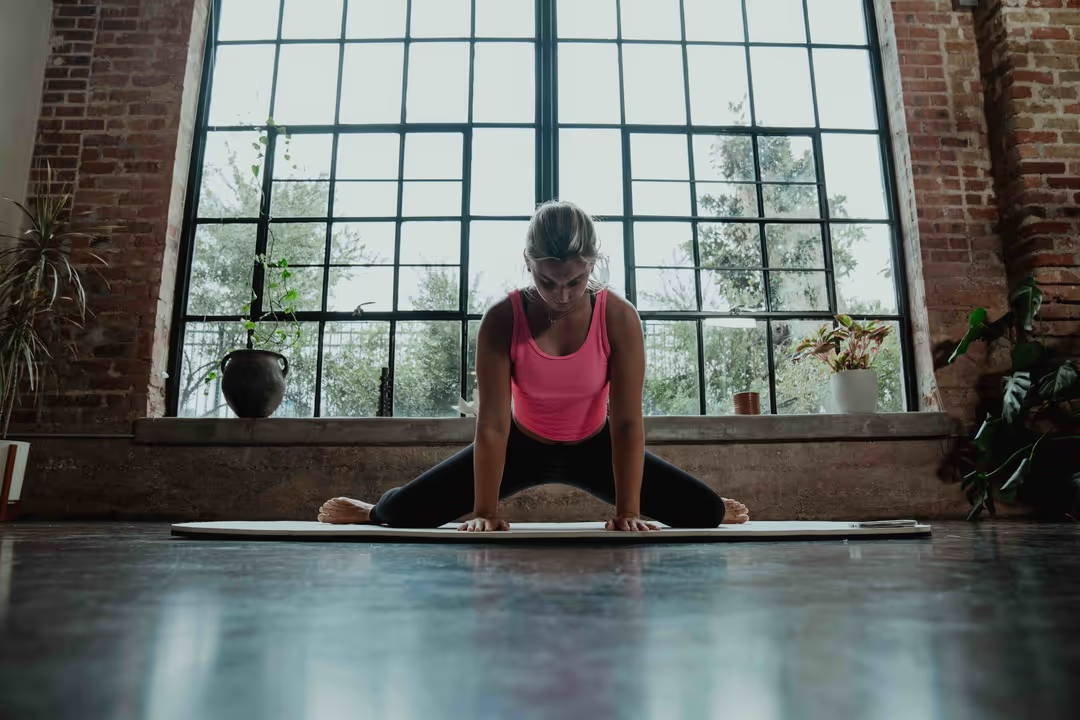
1. Crocodile Breathing: The Groundwork of Mobility
Equipment Needed
Exercise mat (optional)
Muscles Worked
- Diaphragm
- Abdominals
Sets & Reps
3 minutes daily or before exercise
“Deep belly breathing is the ultimate way to start any training session,” says Bo Babenko, DPT, a veteran clinician with years of experience helping athletes of all levels. This rhythmic breathing technique will not only regulate your nervous system and prepare your mind for the workout to follow but also serve as some introductory practice to proper abdominal bracing.
How To Do It
- Lie face down on the floor, cross your arms before you, and place your forehead on the back of your palms.
- Exhale fully until you feel your torso empty of air. Inhale slowly and deeply, thinking about filling your body with air from your chest to your tailbone.
Coach’s Tip
Your lower back should expand and raise slightly toward the ceiling.
2. Single-Leg Supine Leg Raise: A Targeted Approach
Equipment Needed
Exercise mat (optional)
Muscles Worked
- Hip flexors
- Abdominals
Sets & Reps
2 x 10
According to Babenko, grounded core exercises like the leg raise are a phenomenal way of utilizing reciprocal inhibition. This move activates one muscle to signal an opposing muscle that it’s okay to relax. This move will train your core and may help improve hamstring flexibility.
How To Do It
- Lie on your back with one buttcheek scooted up against the pillar of a squat rack or door frame.
- Hike that leg up with your knee locked until you feel a stretch in your hamstring.
- Lift your shoulders off the floor slightly and compress your ribcage to activate your abs.
- With the other leg’s knee locked, gradually lift it until it aligns with your suspended leg, and slowly lower it back down.
Coach’s Tip
For an added challenge, you can hold your arms behind your head with a small weight in-hand.
3. Single-Arm Kettlebell March + Reverse Lunge: Improving Core Control
Equipment Needed
Kettlebell
Muscles Worked
- Obliques
- Hip flexors
- Abdominals
Sets & Reps
3 x 10+
“This drill provides great ‘return-on-investment’ for the hips, and is one I personally do almost every morning,” Babenko says. The standing marches will actively engage your core and hip flexors, while the reverse lunges will lengthen those tissues for a balanced stimulus.
How To Do It
- Rack a kettlebell in the front rack position on one side of your body.
- Brace your core and hold your non-working arm to the side or at your hip for balance.
- Perform standing marches: Bend your knee and lift it to waist height, alternating legs. Then, step backward into a reverse lunge position, alternating legs once again.
Coach’s Tip
Try holding a lighter kettlebell bottoms-up for extra stability instead of racked on your shoulder.
4. Sciatic Nerve Floss: A Dynamic Approach to Nerve Mobility
Equipment Needed
Exercise mat (optional)
Muscles Worked
- Hamstrings
- Lower back
- Hip flexors
Sets & Reps:
2 x 5
Babenko remarks that this is one of the best mobility exercises for runners, skiers, or anyone who mistakenly believes they have tight hamstrings when the underlying cause may be neural. Nerve “flossing” refers to performing a dynamic stretch that mobilizes neural tissue and treats associated symptoms.
Editor’s Note: If you’re experiencing nerve-related pain or conditions like severe tingling or numbness, consult a doctor immediately.
How To Do It
- Stand upright with a staggered stance, placing one foot a few inches in front of the other, making contact with the ground with only your heel.
- Hinge forward, dropping your head towards your forward foot without bending your knees.
- As you drop down, actively sweep your arms forward like you were scooping up the air.
Coach’s Tip
The flatter you can keep your back, the more pronounced a stretch you’ll receive.
5. Dead Hang: Improve Your Shoulder Mobility
Equipment Needed
Pull-up bar
Muscles Worked
- Traps
- Anterior deltoids
- Pectorals
- Rotator cuff
Sets & Reps
3 x 30 seconds
“Accumulating time in a hanging position has all sorts of benefits,” Babenko says. Namely, dead hangs both improve shoulder mobility and provide axial decompression. They allow gravity to apply very mild traction to your spine, countering the compressive forces applied by moves like the squat or overhead press. You’ll also get a free grip exercise along the way.
How To Do It
- Reach up and grab hold of a stable horizontal bar with a shoulder-width, overhand grip.
- Slowly suspend yourself from the bar, hanging freely without swaying.
- Allow your shoulders to pull upward towards your ears as you hold your lower body motionless.
Coach’s Tip
Widening your grip can make hanging easier on your shoulders. If grip strength isn’t a concern, use lifting straps.
6. Banded Hip Mobilization: Open Up Those Hips
Equipment Needed
- Resistance band
- Squat
- Power rack
Muscles Worked
- Glutes
- Hip flexors
- Core
Sets & Reps
3 x 30 seconds per leg
Babenko notes that one of the most common restrictions he sees in his practice is limited hip extension and internal rotation. “Using a heavy band to get the hip opened up with some overhead reaching incorporated is something I use with almost 90% of my clientele,” he says, as a way of stretching out a tight anterior chain.
How To Do It
- Tie a heavy resistance band around a stable structure, such as the frame of a squat rack, at about knee height.
- Place one leg into the loop of the band, then hike it upward into your groin.
- The band should wrap around directly under your buttcheek.
- Take a knee, placing the banded knee on the floor and your opposite foot flat in front of you.
- Allow the band to extend your hip until you feel an intense stretch along the front of your thigh.
Coach’s Tip
To challenge your hip internal rotation, gently twist your down-knee foot towards your opposite side.
7. Kang Squat: A Dual Approach to Mobility and Flexibility
Equipment Needed
- Barbell
- Weight plates
- Weightlifting shoes (optional)
Muscles Worked
- Glutes
- Quads
- Hamstrings
- Lower back
Sets & Reps
3 x 5
“The ability to breathe in the bottom of a squat position is key to proper posture and bracing,” Babenko says. Incorporating a hip hinge can loosen your posterior chain and warm up your entire lower body.
How To Do It
- Unrack an empty barbell and place it on your upper back as you would for a back squat.
- Assume your standard squat stance, then hinge backward into a deep good morning position.
- From the hinged position, sink your butt and drive your knees forward to fall into the bottom of a deep squat.
- Pause, exhale, then reverse the motion, deliberately shooting your hips up and back until you're in the hinged position again.
Coach’s Tip
Keep your back flat and your thoracic spine extended the entire time. If an empty barbell makes this thoracic spine mobility exercise too complicated, use a PVC pipe instead or hold a light weight at chest level.
8. Kettlebell Windmill: Improve Shoulder Stability and Flexibility
Equipment Needed
Kettlebell
Muscles Worked
- Upper back
- Shoulders
- Lower back
- Glutes
- Hamstrings
Sets & Reps
2 x 3
Your shoulder blade sits flush against the back of your ribcage and is the most mobile area in your upper body, meaning you need to stabilize an extensive range of motion. The kettlebell windmill stretches your posterior chain and requires you to isometrically contract your upper back and shoulder girdle to suspend a weight overhead in the process.
How To Do It
- Hold a kettlebell above your head with one arm and take a staggered stance with your legs slightly out of alignment.
- Maintaining a locked elbow in your upper arm, you slowly and gradually tilt your torso to one side, reaching down toward the floor with your other arm.
- Lower yourself until you can touch the floor or until you feel an intense stretch throughout your hip and lower back.
Coach’s Tip:
Your arm must remain perfectly vertical the entire time. If your arm sways or your elbow bends during the windmill, use a lighter weight.
9. Goblet Squat: A Dynamic Approach to Nerve Mobility
Equipment Needed
A moderately heavy object
How To Do It
- Hold a book, milk jug, or other moderately heavy object even with your chest.
- Slowly lower your hips to a point with no pain.
- Hold the position for five to 10 seconds, then ascend from the squat.
Tracking Your Mobility Progress
Mobility exercises can help relieve stiffness and improve your overall range of motion. Like any training, mobility work takes time and consistency to show results. The more regularly you do it, the better the results.
Keep your expectations realistic, and understand that improving mobility is gradual. The best way to track your progress is to take regular notes to see how far you’ve come.
Slow and Steady Wins the Race: Master the Basics First
It’s great to be motivated to improve your mobility, but don’t be in a hurry to get to the advanced-level classes. Make sure you master the basics before moving on. Your body will thank you.
Prioritize Proper Form and Control
It’s far better to engage in a small range of motion but perform the exercise correctly than to do it incorrectly while engaging a larger range of motion. As you begin your mobility training, prioritize control and form over all else. You can gradually increase the difficulty as you improve.
Integrate Mobility Exercises into Your Regular Routine
The best way to be sure you get the most out of your mobility training is to continue with your usual workout regimen and add mobility exercises wherever they work best for you: as stretches first thing in the morning, part of a cool-down routine at night, or wherever and whenever possible. Just ten minutes at a time can build up and make a big difference.
Listen to Your Body
Feeling mild discomfort during a stretch is normal, but sharp or intense pain is not. Stop if you feel pain.
How to Add Mobility Exercises to Your Workout Routine/

Mobility exercises are best utilized before a workout as part of a warmup routine. When you are getting ready for a specific workout, make the mobility movements specific to what you are going to train for the day. Also, think dynamic movement vs. static hold drills. The last thing you want to do in your warmup is static stretching. We want to prep the muscles for the workout ahead. This means moving the joints through a full range of motion, even during your workout prep.
Ensure You Are Moving Through A Full Range Of Motion
When you train, make sure you are going through a full range of motion. Joints remain healthy when they are moving through a full range of motion, often. If you don’t use it, you lose it!
Pair A Strength Movement With A Mobility Movement
Think of it as a strength and mobility superset. The mobility work will act as your active rest. Make sure you are resting fully after the mobility movement! If you are not getting enough rest in between sets by doing this, you may need to choose a different way to add in your mobility work.
Add More Passive Mobility Drills Towards The End Of Your Workout
This is the time when you can add more passive stretches into your workout since your muscles and joints are already warm. Do them with intent. Don’t just sit there and hold a stretch for the sake of holding it. Breathe into the stretch and actively tense the muscles you are working on making more flexible.
How Often Should You Do Mobility Exercises?
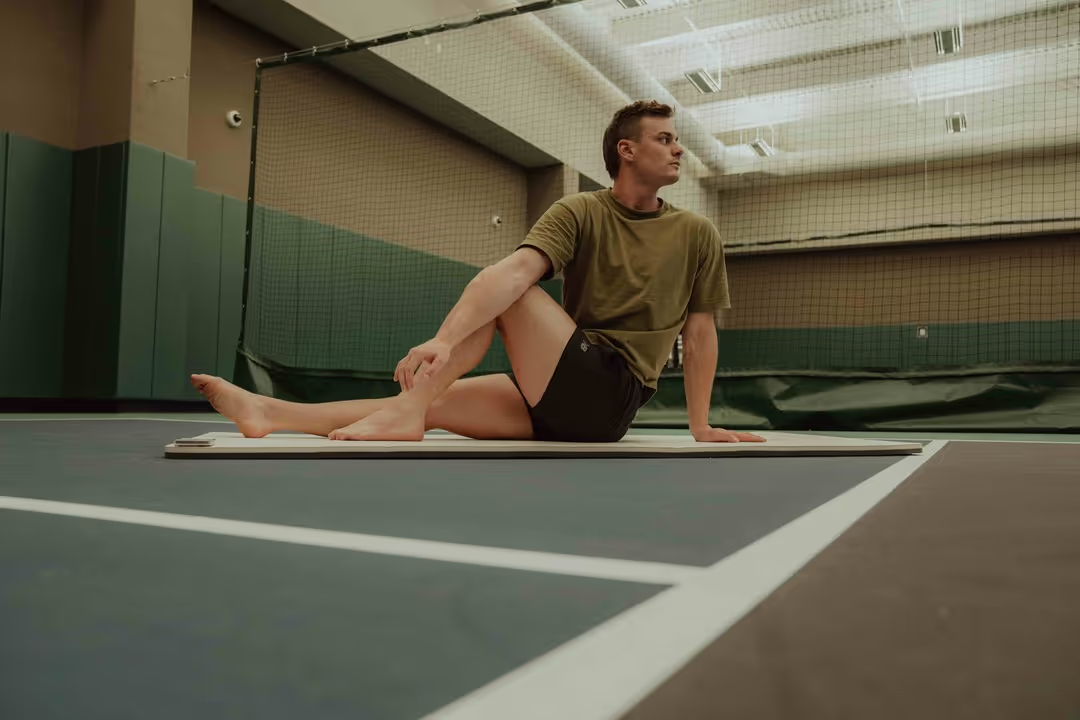
- Mobility exercises are most beneficial when done consistently, so aim to practice them at least three to five times a week.
- For those with specific movement restrictions or injuries, daily mobility work might be more beneficial.
- Short, frequent sessions are more effective than sporadic, lengthy ones.
“It’s more beneficial to practice mobility five times a week, for five to 10 minutes each time, than it is to do an hour-long session once a week,” Andy says. “For example, you might do five to 10 minutes of mobility training daily, and make two or three of those days a longer practice, like 15 to 30 minutes. It will have you feeling great and moving well.”
That said, the frequency and duration of your mobility training will depend on you, your current fitness level, your fitness goals, and whether you’re dealing with an injury or any problem areas. You might start with a few times a week and build up. Ideally, you’ll want to include some mobility training every day.
Find Your Focus to Improve Your Mobility
When it comes to mobility training, the general rule is to do it as often as you need to, but to begin slowly, working on just one or two areas of the body to start with. Maybe that’s your shoulders and spine or your knees and ankles.
When it comes to mobility exercises, it’s important to focus on quality over quantity. Start by doing fewer exercises and concentrating on using proper form. Don’t rush through the exercise set list. As always, you should listen to your body and modify or skip anything that causes pain.
Stack Mobility Training with Other Workouts
“Consistency is key,” Andy explains. “Do it however it best fits into your life. If stacking mobility training with your other workouts is best for your schedule, then do that. Doing the longer mobility classes on days between more intense training will help your recovery between workouts.”
Related Reading
- Gowod Vs Pliability
- Tennis Mobility Exercises
- Weighted Mobility Exercises
- Cervical Mobility Exercises
- Resistance Band Mobility Exercises
- Rib Mobility Exercises
- Glute Mobility Exercises
- Best Yoga App
- Free Apps For Stretching And Flexibility
- Mobility Apps
- Stretching Apps
- Chest Mobility Exercises
- Glute Stretches
- Gluteus Medius Stretch
- Glute Stretch
- Cervical Radiculopathy Exercises
Improve Your Flexibility with Our Mobility App Today | Get 7 Days for Free on Any Platform
Pliability offers a fresh take on yoga, tailored for performance-oriented individuals and athletes. Our app features a vast library of high-quality videos designed to:
- Improve flexibility
- Aid recovery
- Reduce pain
- Enhance range of motion
Pliability provides daily-updated custom mobility programs for those interested in optimizing their health and fitness. It also includes a unique body-scanning feature to pinpoint mobility issues. If you're feeling limited by pain or ability to move, Pliability aims to complement your existing fitness routine and help you move better.
Sign up today to get 7 days absolutely for free on iPhone, iPad, Android, or our website to improve flexibility, aid recovery, reduce pain, and enhance range of motion with our mobility app.
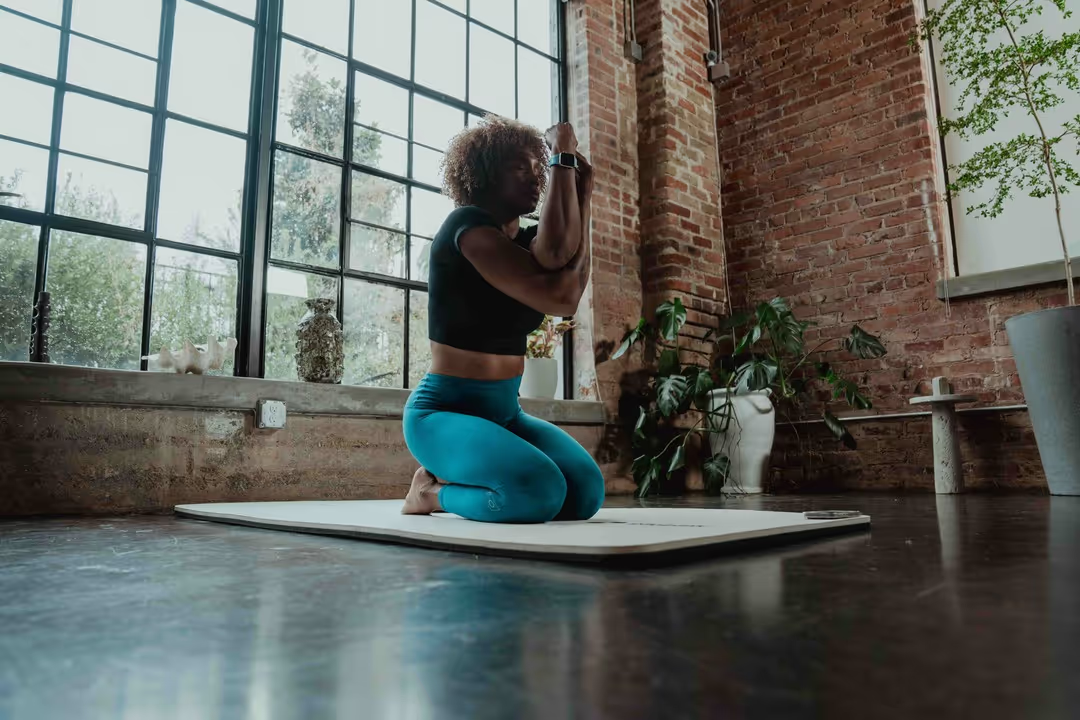
.jpeg)


.jpg)
.jpg)
